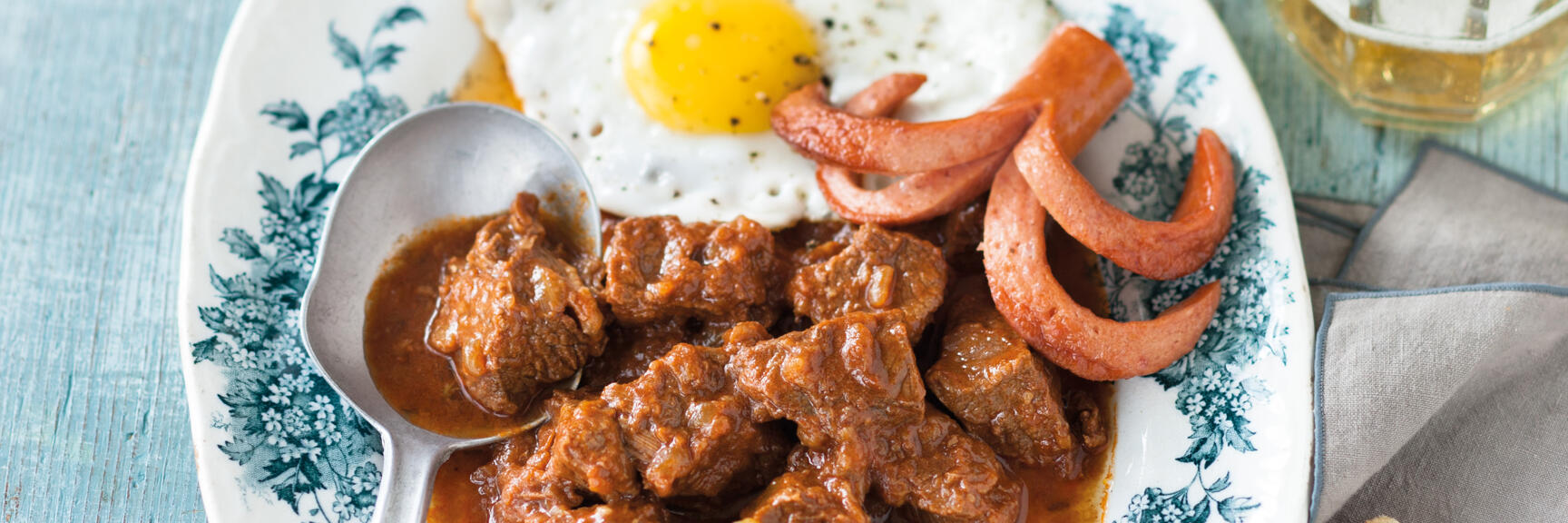Coachman's Goulash
- Classics
- Meat
- Main Course
This goulash owes its name to the ever-hungry coachmen who drive carriages around Vienna.
Preparation
- Preparation time: 300 min
- 4 Servings
Tidy up the meat by removing the bone, fat, and sinew but not the gelatinous parts in the meat. Cut the meat into bite-sized cubes, and chop the onions.
Heat the clarified butter in a large pan and soften the onions very slowly by cooking them over a fairly low heat and stirring constantly – the longer they cook, the better.
Sprinkle the paprika powder over them, quickly take out any heat by splashing over with a dash of vinegar, and stir in the tomato paste. Add the meat, stir briefly, and then flavour with the garlic, caraway, salt, pepper, and a pinch of marjoram. Add some water, so the meat is just covered, and depending on the type of meat steam for around 2 – 3 hours until soft. Stir occasionally and top up regularly with small amounts of water.
Once the meat is tender, pour in some more water and allow the juice to boil down for a final 10 – 15 minutes. Season according to taste.
For the garnish, place the sausages in hot water in the final 10 – 15 minutes and fry the eggs in butter. Slice the pickled gherkins so that they can be fanned out.
Arrange the goulash on large plates, place a hot sausage on top of each plate, and top with a fried egg. Garnish with the fanned gherkin. If preferred, decorate with strips of red pepper.
Serve with crispy breadsticks or rolls, or alternatively, with salted potatoes.
Ingredients
Did you know, that...?
The Fiaker Goulash owes its name to the - always hungry - coachmen who drive traditional carriages around Vienna. The beef ragout is garnished with sausages and a fried egg, served in a plump juice of sweet paprika powder. It originates from Austria's neighbouring country Hungary. Even famous French chef Auguste Escoffier had "his" paprika imported from Hungary in the 19th century.
